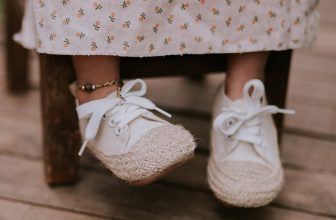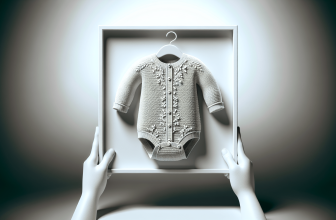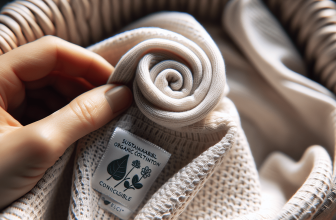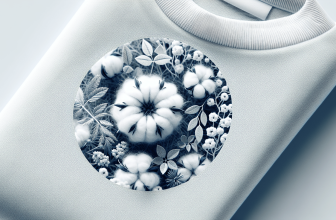When it comes to baby clothing design, it’s fascinating to explore the diverse cultural influences that shape the adorable outfits we dress our little ones in. From vibrant colors and intricate patterns to traditional symbols and motifs, culture plays a significant role in creating unique and expressive designs that reflect the traditions and values of different communities around the world. Whether it’s the delicate embroidery of a traditional Chinese romper or the bold prints inspired by African tribal art, each piece of baby clothing tells a story, connecting us to the rich tapestry of global cultures. So next time you pick out an outfit for your little bundle of joy, remember that there’s so much more than just adorable fashion at play – there’s a whole world of cultural heritage wrapped up in those tiny clothes.
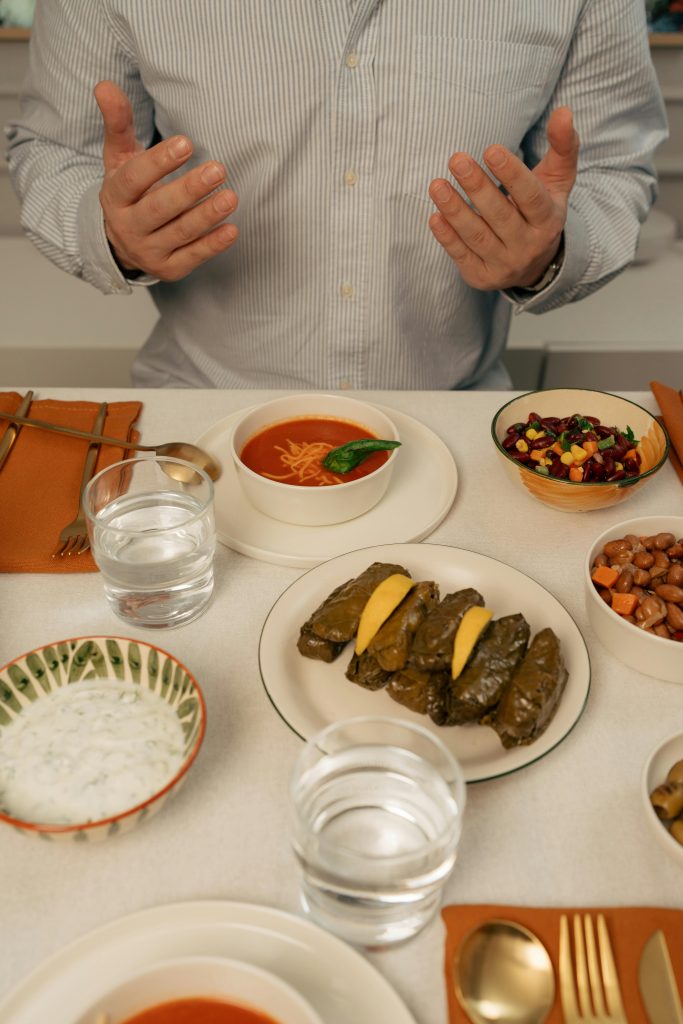
This image is property of images.pexels.com.
Traditional Clothing Styles
Influence of traditional clothing on baby clothing design
When it comes to baby clothing design, traditional clothing styles from various cultures have a significant influence. These traditional styles reflect the unique heritage and cultural values of different communities. Incorporating elements of traditional clothing into baby wear not only pays homage to the past but also allows parents to connect with their own cultural roots and pass down these traditions to the next generation.
Examples of traditional clothing styles from different cultures
Every culture has its own distinct traditional clothing styles that embody its history, values, and customs. For example, in India, traditional baby clothing includes vibrant and intricately designed garments such as lehengas and sherwanis, reflecting the rich cultural heritage of the country. Similarly, in Japan, traditional baby kimonos known as “jinbei” are often worn during special occasions like festivals or family gatherings. These examples highlight the diversity and beauty of traditional clothing styles across different cultures.
How traditional clothing elements are incorporated into baby clothing
Designers often draw inspiration from traditional clothing elements to create unique and culturally significant baby clothing. Traditional patterns, motifs, and embroidery techniques are incorporated into modern baby wear to honor the traditions of various communities. By using traditional fabrics and textiles, designers are able to authentically capture the essence of different cultures in baby clothing. Additionally, designers adapt traditional clothing silhouettes to fit the needs and comfort of babies, creating a harmonious blend of tradition and functionality.
Color Palettes
The significance of colors in different cultures
Colors hold great significance in different cultures, often representing various emotions, beliefs, and traditions. For example, in many Western cultures, white is associated with purity and innocence, while in Indian culture, it signifies mourning. Similarly, red is considered lucky and auspicious in Chinese culture, while in many African cultures, it represents strength and vitality. Understanding these cultural associations with colors helps designers choose appropriate color palettes for baby clothing that reflect the values and beliefs of different communities.
How color choices in baby clothing reflect cultural influences
When designing baby clothing, color choices play a vital role in reflecting cultural influences. Whether it’s the vibrant hues of traditional Indian clothing or the earthy tones of African textiles, designers carefully select colors to capture the spirit of different cultures. By incorporating culturally significant colors into baby clothing, designers create garments that resonate with parents who want to celebrate their heritage and introduce their little ones to their cultural roots from an early age.
Popular color palettes in baby clothing design
While color palettes in baby clothing design vary depending on cultural influences, there are also popular color choices that transcend borders. Soft pastels, such as pale pink and baby blue, are often associated with babies and are widely used in baby clothing design. Neutral colors like white, cream, and gray are also popular as they provide a timeless and versatile aesthetic. Furthermore, vibrant colors like yellow and green are often used to evoke a sense of joy and playfulness in baby clothing, regardless of cultural influences.
Prints and Patterns
Cultural motifs and symbols used in baby clothing prints
Prints and patterns in baby clothing often feature cultural motifs and symbols that hold specific meanings in different cultures. For example, in Native American cultures, prints with symbols like feathers or dreamcatchers are commonly used, representing protection and good luck. In African cultures, prints featuring tribal patterns or animal motifs reflect the rich cultural heritage of the continent. These prints allow parents to express their cultural identity through their child’s clothing, fostering a sense of pride and connection to their heritage.
Influence of art and design styles on baby clothing patterns
Baby clothing patterns are influenced by various art and design styles from different cultures. From intricate floral patterns inspired by traditional Asian art to geometric motifs borrowed from African textiles, these designs bring a touch of cultural diversity and uniqueness to baby clothing. Whether it’s the bold and vibrant patterns of Mexican textiles or the delicate paisley motifs of Indian textiles, these influences enrich the visual appeal of baby clothing and create a sense of cultural appreciation.
Meanings associated with specific prints and patterns in different cultures
Specific prints and patterns in baby clothing can hold deep meanings in different cultures. For instance, in Chinese culture, the dragon print symbolizes power and good fortune, while in Mexican culture, the sugar skull pattern represents the Day of the Dead and the celebration of deceased loved ones. These prints and patterns act as a visual language that tells a story of culture, tradition, and identity. By incorporating these meaningful designs into baby clothing, parents can share their heritage and teach their children about their cultural significance from an early age.
Fabrics and Textiles
Traditional fabrics used in baby clothing
Traditional fabrics play a crucial role in the design of baby clothing, as they reflect the heritage and craftsmanship of different cultures. For example, in Scotland, traditional baby kilts are made of tartan, a woven fabric with distinctive check patterns that hold symbolic significance for each clan. Similarly, in West Africa, colorful fabrics like Ankara or kente cloth are commonly used in baby clothing to represent cultural pride and identity. These traditional fabrics not only lend authenticity to baby clothing but also ensure a connection to cultural roots.
Cultural significance of certain textiles
Certain textiles hold deep cultural significance in different communities. For instance, in Indian culture, silk is considered auspicious and is often used in baby clothing for special occasions. Silk represents luxury, royalty, and purity, making it a popular choice for traditional ceremonies and celebrations. In Native American culture, fabrics like wool and leather are traditionally used due to their durability and connection to nature. Understanding the cultural significance of different textiles helps designers to select appropriate fabrics that align with the values and traditions of specific cultures.
How fabric choices are influenced by cultural heritage
Fabric choices in baby clothing design are greatly influenced by cultural heritage. Designers draw inspiration from traditional textiles and fabrics to create baby clothing that respects and honors different cultural backgrounds. Whether it’s the soft and breathable cotton fabrics used in many traditional Asian garments or the intricately woven textiles from South America, each fabric choice reflects the craftsmanship and cultural heritage of its respective culture. By using fabrics with cultural significance, designers can help parents instill a sense of cultural pride in their children through their clothing.

This image is property of images.pexels.com.
Embroidery and Embellishments
Traditional embroidery techniques in baby clothing
Embroidery is a form of decorative stitching that has been used for centuries in various cultures. Different cultures have their own distinct embroidery techniques that are often passed down through generations. For example, in Mexican culture, the embroidery technique known as “tenango” involves colorful threadwork depicting animals, flowers, and other symbols deeply rooted in the culture. Similarly, in European cultures, delicate hand embroidery with intricate patterns is often used in christening gowns and other ceremonial baby clothing. Incorporating these traditional embroidery techniques into baby clothing adds an exquisite and culturally rich touch to the garments.
Religious or ceremonial embellishments in cultural designs
Religious or ceremonial embellishments are commonly used in cultural designs for baby clothing. These embellishments can include symbols, motifs, or objects that have spiritual or ceremonial significance. For instance, in Indian culture, baby clothing for religious ceremonies may feature embellishments like small mirrors, beads, or sequins, which are believed to ward off evil spirits and bring good luck. These embellishments not only enhance the aesthetic appeal of baby clothing but also serve as a connection to the religious and ceremonial traditions of different cultures.
Symbolic meanings behind specific embroidery patterns
Specific embroidery patterns often carry symbolic meanings in different cultures. For example, in Chinese culture, the lotus flower embroidery represents purity and enlightenment, while in African cultures, the Adinkra symbols embroidered on baby clothing convey messages of wisdom, strength, and unity. These symbolic embroidery patterns tell stories and convey cultural values and beliefs. By incorporating these patterns into baby clothing, parents have the opportunity to introduce their children to the rich symbolism of their cultural heritage through clothing.
Silhouettes and Styles
Influence of traditional clothing silhouettes on baby clothing
Traditional clothing silhouettes have a strong influence on the design of baby clothing. Designers often adapt traditional adult clothing silhouettes to create miniature versions for babies. For example, the kimono-inspired silhouette commonly seen in Japanese baby clothing captures the elegance and simplicity of traditional Japanese garments. Similarly, the flowing and loose-fitting silhouettes in African baby clothing reflect the cultural preference for comfort and freedom of movement. Preserving these traditional silhouettes in baby clothing allows parents to dress their little ones in styles that have been cherished for generations.
Cultural preferences for loose or fitted styles
Cultural preferences for loose or fitted styles play a role in the design of baby clothing. For instance, in some Middle Eastern cultures, loose and flowing garments are preferred for both adults and babies due to their practicality in hot climates. On the other hand, in Western cultures, fitted and form-fitting styles are often favored for baby clothing, reflecting a preference for a more tailored and fashionable look. By considering cultural preferences when designing baby clothing, designers can cater to the diverse needs and tastes of different communities.
Adapting traditional adult clothing silhouettes for baby wear
Adapting traditional adult clothing silhouettes for baby wear allows parents to dress their little ones in styles that reflect their cultural heritage. Designers carefully modify these silhouettes to ensure they are comfortable and suitable for babies. For example, traditional Chinese qipao dresses, with their high collars and fitted waistlines, are often reimagined in baby clothing with larger neck openings and softer fabrics to accommodate the delicate needs of infants. This adaptive approach allows parents to celebrate their cultural traditions while ensuring the clothing is appropriate and safe for their babies.

This image is property of images.pexels.com.
Symbolism and Superstitions
Symbolic representations in baby clothing design
Symbolic representations are often incorporated into the design of baby clothing to convey cultural or personal meanings. These symbols can range from animals and flowers to objects of significance. For example, a baby clothing design featuring an elephant may symbolize strength and wisdom in many Eastern cultures. Similarly, a garment embellished with a four-leaf clover may represent good luck in Western cultures. These symbolic representations allow parents to express their beliefs and values through their child’s clothing, creating a sense of connection and identity.
Superstitious beliefs influencing design choices
Superstitious beliefs often influence design choices in baby clothing. In many cultures, certain symbols, colors, or patterns are believed to bring good luck or protect against negative energies. For instance, in Greek culture, the “evil eye” symbol is commonly used in baby clothing as a talisman believed to ward off evil spirits and protect the wearer. Similarly, in many Asian cultures, the color red is believed to bring good fortune and is often incorporated into baby clothing design. By incorporating these superstitious beliefs into design choices, parents seek to create a positive and auspicious environment for their little ones.
Examples of cultural symbols and their meanings
Cultural symbols are deeply rooted in tradition and carry specific meanings. These symbols often find their way into baby clothing design as a way to convey cultural identity and values. For example, in Irish culture, the Claddagh symbol, which features two hands holding a heart with a crown, represents love, loyalty, and friendship. This symbol is often used in Irish baby clothing to celebrate the cultural heritage and express these values. From the Hamsa hand symbol in Middle Eastern cultures to the Celtic knot in Scottish culture, these symbols allow parents to instill cultural pride and meaningful connections through their child’s clothing.
Regional Variations
Differences in baby clothing design across regions
Baby clothing design varies across different regions, reflecting the unique cultural traditions and customs of each area. For instance, in Scandinavian countries, baby clothing often features minimalistic designs with a focus on functionality and comfort. In contrast, in Latin American countries, baby clothing is known for its vibrant colors, intricate embroidery, and playful designs. These regional variations ensure that baby clothing design is inclusive of diverse cultural backgrounds and pays homage to the specific traditions and aesthetics of each region.
Regional traditions influencing design elements
Regional traditions play a vital role in influencing design elements in baby clothing. From the choice of fabrics and colors to the patterns and embellishments used, designers take inspiration from regional traditions to create distinctive garments. For example, in the Caribbean, baby clothing often incorporates elements like ruffles, bright tropical prints, and light fabrics to suit the warm climate and festive atmosphere. Incorporating regional traditions in baby clothing design allows parents to celebrate their local culture and identities, fostering a sense of community and shared values.
Unique cultural characteristics reflected in baby clothing
Baby clothing is a reflection of unique cultural characteristics found in different regions. Whether it’s the intricate beadwork of Native American designs or the delicate lacework of European garments, these characteristics give baby clothing a distinct identity. For example, traditional Icelandic baby clothing often incorporates warm wool and Nordic-inspired patterns to withstand the harsh winters and reflect the cultural heritage of the country. By infusing baby clothing with these unique cultural characteristics, designers create garments that are not only functional but also tell stories of different cultures.
Seasonal Influences
Cultural celebrations and festivals impacting baby clothing design
Cultural celebrations and festivals have a significant impact on baby clothing design, as they provide an opportunity for parents to dress their little ones in special garments reflective of the occasion. For example, during the Chinese New Year, baby clothing often features red colors and motifs like dragons or lanterns, symbolizing good luck and prosperity. Similarly, in Western cultures, baby clothing for holidays like Christmas or Easter may incorporate festive colors and patterns to capture the joyous spirit of the season. These seasonal influences allow parents to create cherished memories and celebrate cultural traditions through their child’s clothing.
Traditional clothing choices for different seasons
Traditional clothing choices for different seasons vary across cultures, taking into account climate, weather conditions, and cultural festivities. In colder regions, baby clothing may include warm and cozy materials like wool or fur, with layered designs to provide insulation. In warmer climates, lightweight fabrics like cotton or linen are favored to ensure breathability and comfort. Additionally, specific cultural celebrations during different seasons may influence traditional clothing choices. For instance, in Indian culture, baby clothing for Diwali, the Festival of Lights, often incorporates vibrant colors and embellishments to mark the joyous occasion.
Seasonal color palettes and patterns in baby clothing
Seasonal color palettes and patterns play a role in baby clothing design, reflecting the spirit of different seasons and cultural festivities. For example, during spring, baby clothing may feature pastel colors and floral patterns to embody the freshness and renewal associated with the season. In summer, bright and bold colors are often used to capture the vibrancy and energy of the season. Additionally, seasonal patterns like snowflakes for winter or suns and stars for summer are commonly seen in baby clothing to add a touch of seasonality and celebrate the changing times of the year.
Gender Stereotypes
Cultural influences on gender-specific baby clothing
Cultural influences have a substantial impact on gender-specific baby clothing designs. Many cultures have specific colors and styles associated with boys and girls that reflect societal norms and gender expectations. For example, in Western cultures, blue is often associated with boys, while pink is associated with girls. These gendered color preferences are deeply ingrained and shape the design choices in baby clothing, reinforcing traditional gender roles and stereotypes.
Traditional colors and styles associated with boys and girls
Traditional colors and styles associated with boys and girls often stem from cultural and societal norms. Blue has been traditionally associated with boys in Western cultures because it was considered a strong and masculine color. In contrast, pink was associated with girls as it was seen as a softer and more delicate color. Similarly, traditional clothing styles for boys often feature pants, shirts, and suits, while girls’ clothing is characterized by dresses, skirts, and frilly details. These traditional color and style associations have influenced baby clothing design for generations, but there is an increasing trend towards breaking these gender stereotypes in contemporary baby clothing.
Breaking gender stereotypes in contemporary baby clothing
Contemporary baby clothing designers are challenging gender stereotypes by creating gender-neutral designs that break away from traditional color and style associations. Gender-neutral baby clothing allows parents to dress their children in garments that are not restricted by societal expectations and stereotypes. These designs often feature neutral colors like gray, green, or yellow, and embrace minimalist aesthetics and comfortable silhouettes suitable for both boys and girls. By offering gender-neutral options, designers provide parents with more choices, empowering them to choose clothing that aligns with their values and beliefs, regardless of traditional gender norms.
In conclusion, cultural influences play a substantial role in baby clothing design. From traditional clothing styles and color palettes to prints, patterns, and fabrics, each aspect of baby clothing design is influenced by the rich heritage and customs of different cultures. By incorporating elements of traditional clothing, designers not only celebrate diverse cultural identities but also allow parents to pass down their cultural heritage to their children. With an understanding of symbolism, superstitions, regional variations, seasonal influences, and the importance of breaking gender stereotypes, designers can create baby clothing that acts as a bridge between past and present, allowing little ones to embrace their cultural roots from the very beginning.



